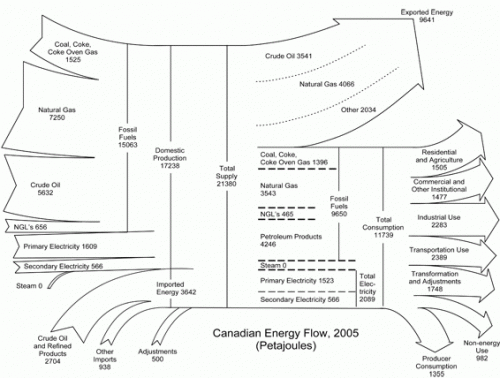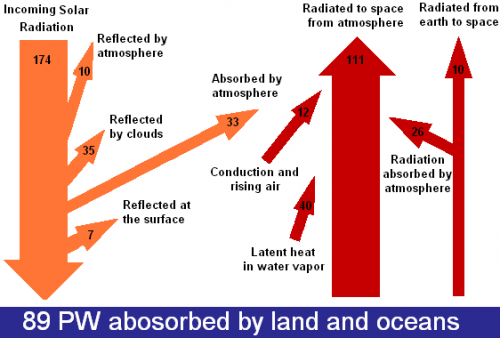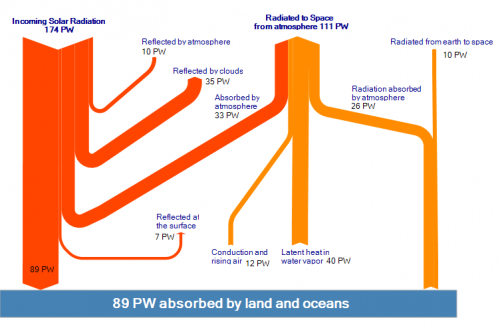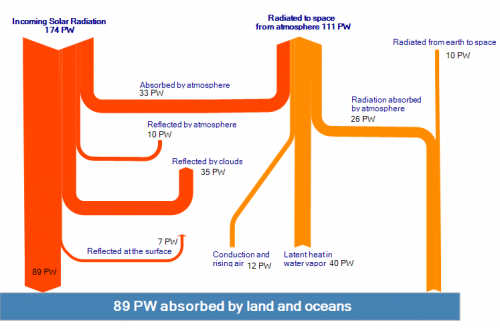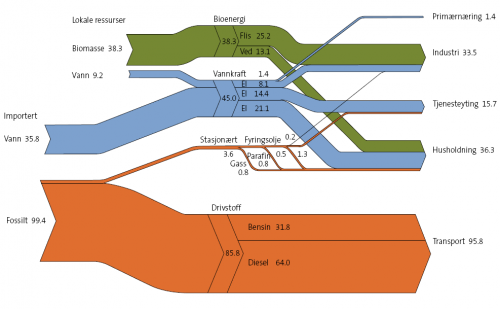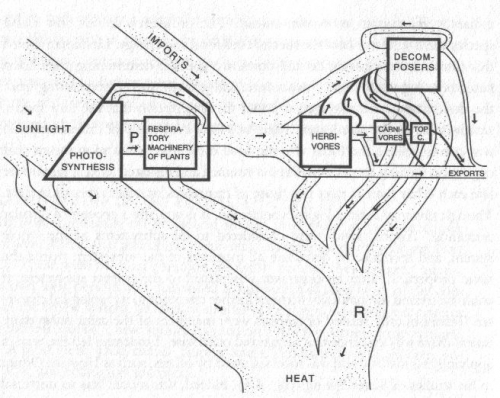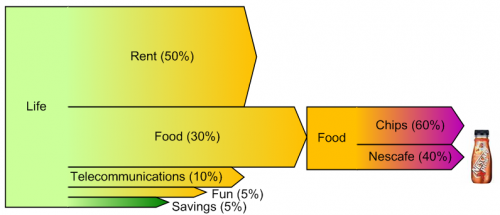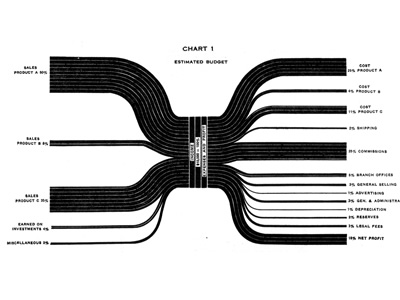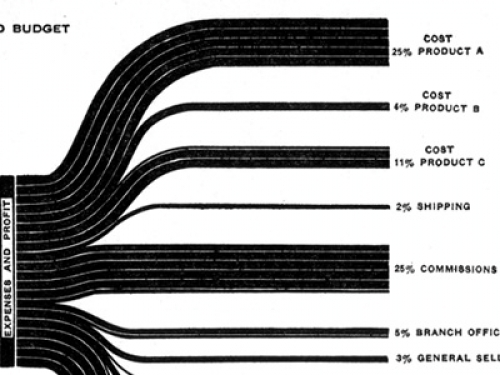Statistics Canada in its “Report on Energy Supply-demand in Canada” for 2005 shows two Sankey diagram in the annex (HTML version of the two Sankey diagrams). They show the energy flows for Canada 2005 and 2004 in Petajoules per year.
I have featured similarly structured diagram for other countries here before: Japan, Scotland, Ireland, and the United States.
Out of 21380 PJ of total energy produced in Canada and imported, some 9641 PJ (45%) are exported, while 11739 PJ (55%) are national consumption. If you have the impression that the proportions are not 45:55, you are right, they are more like 39:61! From a graphical perspective this Sankey has more peculiarities worth a mention: the magnitude of the Sankey arrow changes and just before the arrow head they become narrower. The flows labeled “Steam” and “Adjustments” seem to have been added at a later stage as they don’t merge into the other arrow. Steam is represented on the production side as well as in the breakdown of energy carriers with a small, but not unsignificant width, however the quanity is given as zero.
